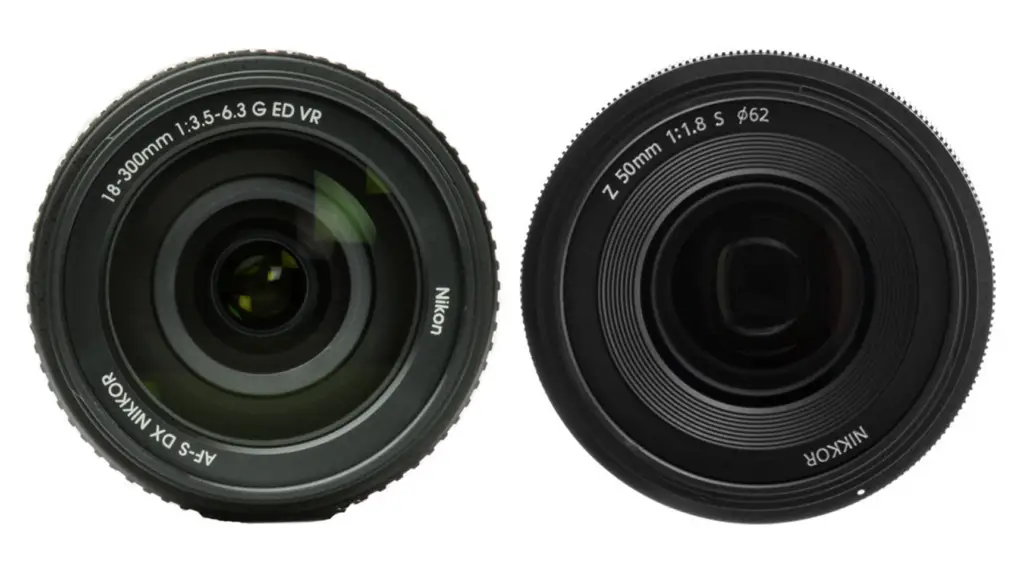The purpose of the focal length is to determine the field of view, perspective, and depth of field of a camera lens. The smaller the focal length, the wider the field of view and the more space in the shot, while longer focal lengths produce a tighter cropped shot with a smaller field of view and higher magnification.
The focal length of lenses has to do with how much of the scene will be captured, what will be in focus, and how large each object is in the shot. A shorter focal length gives you a wide angle of view which allows more in the frame while a longer focal length gives you a more narrow angle of view, you can see further away, and your subject appears larger.
If you want to understand more about how focal length affects your photography and how to know when you have the right focal length for your subject, we delved into the purpose for different focal lengths, zooms, and lenses below. We also discuss how to calculate focal length and why it is important.
What Does the Focal Length of the Lens Mean?
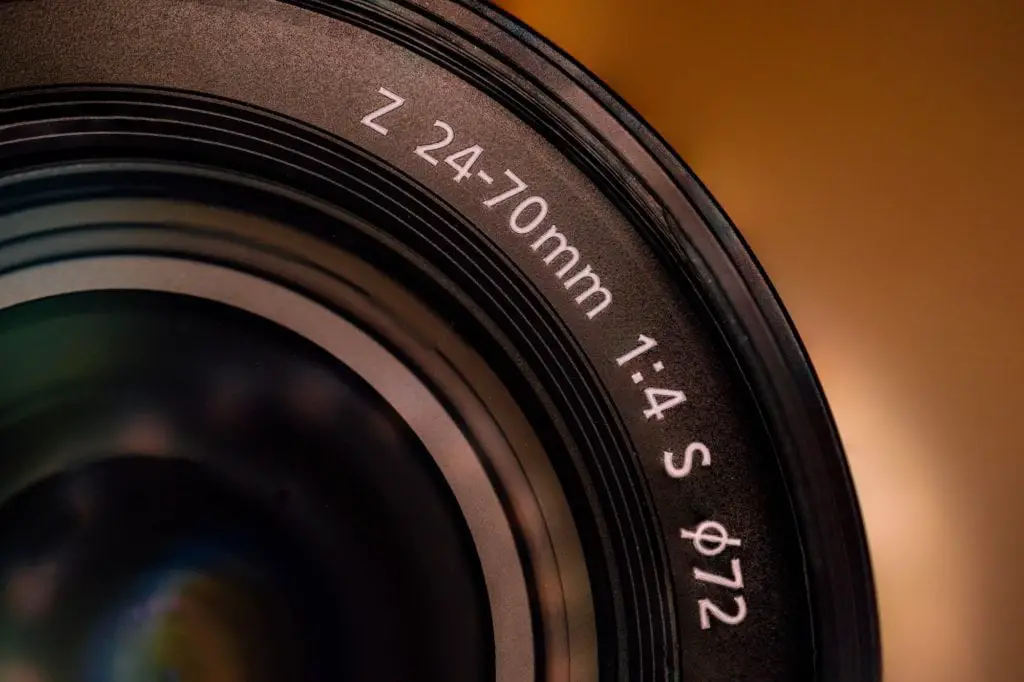
According to Nikon , the focal length of the lens is the distance between the lens and the image sensor when the subject is in focus. It is most often listed in millimeters (though sometimes it is listed in centimeters) and lenses with different zoom levels label both the smallest and largest focal length but not the levels in between. The smaller the focal length means the wider angle of view while the larger the number equates to a more narrow angle of view.
, the focal length of the lens is the distance between the lens and the image sensor when the subject is in focus. It is most often listed in millimeters (though sometimes it is listed in centimeters) and lenses with different zoom levels label both the smallest and largest focal length but not the levels in between. The smaller the focal length means the wider angle of view while the larger the number equates to a more narrow angle of view.
How is Focal Length Measured?
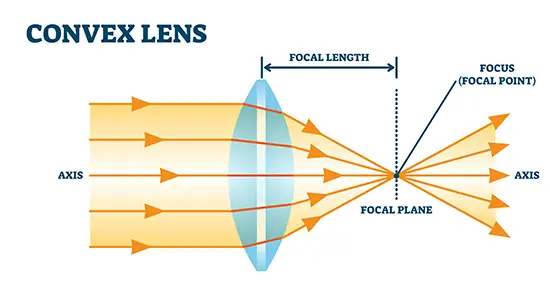

As discussed by Professor Morel at the University of Arizona , the quickest way to approximate the focal length of a lens is to use a stationary light projected on a screen and to move the lens until the image projected is sharp. The distance between the light and the lens is the approximate focal length.
, the quickest way to approximate the focal length of a lens is to use a stationary light projected on a screen and to move the lens until the image projected is sharp. The distance between the light and the lens is the approximate focal length.
There are several different advanced methods to mathematically and precisely measure focal length, including the Y’/tan method , the nodal slide method
, the nodal slide method , the Cornu method
, the Cornu method , Moire deflectometry
, Moire deflectometry , to name a few. Most of these methods use math, scales, and other measuring equipment to calculate the exact length.
, to name a few. Most of these methods use math, scales, and other measuring equipment to calculate the exact length.
How Does Focal Length Affect the Image?
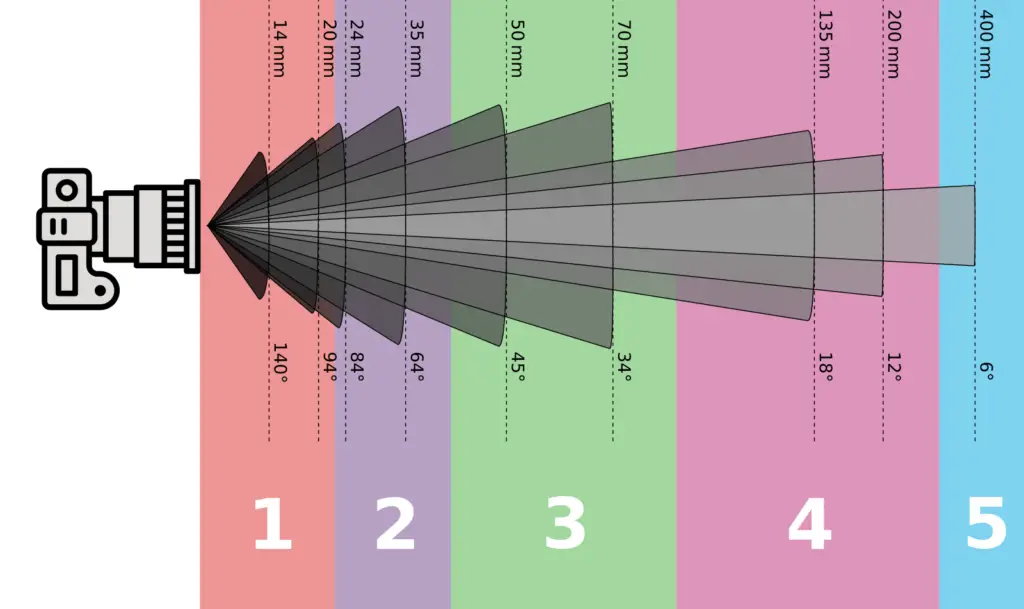
According to a study published to PubMed Central , focal length affects the image directly in the three ways listed below.
, focal length affects the image directly in the three ways listed below.
- Perspective- The larger the focal length of the lens, the more a lens will push elements in the shot towards each other while shorter lenses tend to make objects in the shot appear farther apart. Lenses with smaller focal lengths make objects nearer to the camera larger while objects further away appear smaller. This effect is called wide-angle distortion and is mostly seen in selfie shots because cell phones generally have wide-angle lenses.
- Field of View- The shorter the lens (or smaller the focal length), the wider the field of view, allowing more of what the camera is pointed at to be captured in the shot. A telephoto lens, or other lenses with longer focal lengths, have a narrower field of view because they capture less of what the camera is pointed at. However, you are able to see far away things much closer.
- Depth of Field- Similar to the field of view, depending on the lens’s construction a shorter focal length (like 16mm) has a deeper depth of field causing more of the scene to be in focus at a given aperture (like f/5.6). This effect is used in landscape photography so the camera can capture the entire scene). In contrast, a longer lens with a narrower field of view gives a more shallow depth of field of focus of the scene at a given aperture (like f/5.6). This is often taken advantage of when taking portraits to make the main subject pop off from the background by making the area behind or in-front of the subject out of focus).
How to Avoid Camera Shake
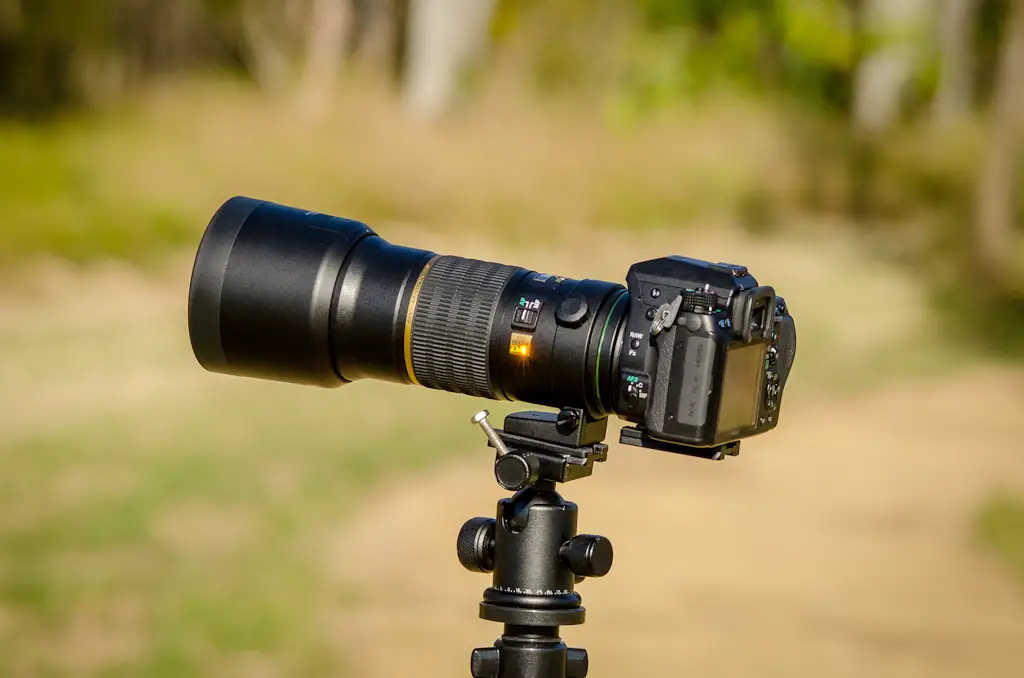
Lenses with wide focal lengths (like 16mm or 27mm) are shorter and therefore do not suffer from camera shake as much as lenses with longer focal lengths. Because of a combination of all the above factors, longer lenses are more affected by the movement of the camera than shorter lenses when taking an image. This is called camera shake and it can ruin your sharp photos.
Luckily, there are two ways to avoid camera shake when dealing with a zoom lens.
- The method I most commonly have used is to set your shutter speed the same or faster than your focal length. For example, if you are using a 300mm lens then your shutter should either be 1/300th of a second or faster to avoid blurry photos caused by camera shake.
- Use a steady mono– or tripod if you are planning on using a long zoom lens like a telephoto or super-telephoto lens to help make sure you can keep the camera steady to snap a clear image. Some telephoto lenses even have a tripod mount built (like this Canon 70 – 200mm lens) into the lens to help balance the weight of the camera and lens.
I recommend using both methods when you want a sharp image and to avoid camera shake. However, if you aren’t able to use a mono- or tripod the best option is setting your shutter speed equal to or more than your focal length.
What Focal Length Lens do I Need?
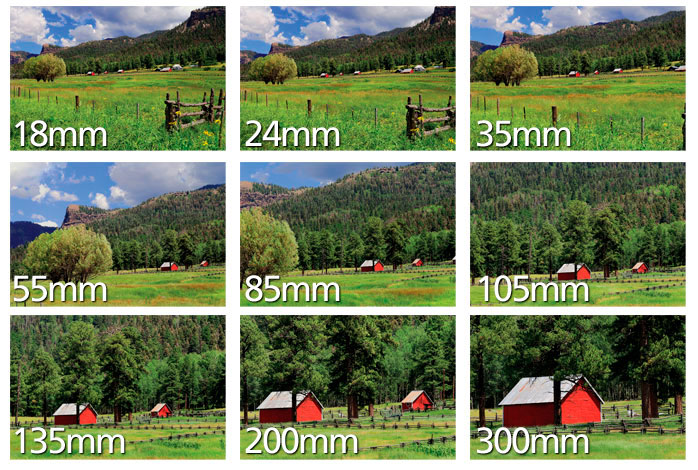

The focal length you need depends on the type of photo you are shooting, the distance you are trying to capture the image from, whether or not motion is involved, and what you need to be in focus. Below are several of the most common photo lenses and what they are most used for, according to Nikon .
.
- Wide-angle (14-35 mm)- These lenses are used when a photographer is in a confined space or wants to capture a wide landscape. These lenses capture a large amount of space despite being close to a subject. Fisheye lenses are extremely wide lenses like 10mm and can distort your subject. These lenses are also used in architectural photography to capture a large interior or exterior.
- Standard (50-60 mm)- These lenses are called standard because they are the closest approximation to what the human eye sees. They distort your shot less and are usually paired with a larger aperture in order to allow enough light for sharp shots in dim conditions. They are commonly used for portraits, street photography, and nature/landscape images.
- Telephoto (70-200 mm)- These lenses are commonly used for taking images of people, products, nature, and wildlife. They have a narrow field of view that allows the photographer to capture a subject in a tight frame without having to very close to the subject, like a wide-angle lens. 85mm lenses, which are in this range, are considered the best portrait lens because they offer a narrow field of view with the least amount of distortion to the subject’s facial features.
- Super Telephoto (300-600 mm)- Similar uses to a telephoto lens when a photographer has to be a long-distance away. These lenses are commonly used for sporting events and other places where a photographer can’t get close to their subject.
Related Article: 35mm Vs. 50mm Vs. 85mm Lenses. How To Use Them and Which One Is Right For You?
Why is Focal Length Important?
According to Nikon, focal length is important because it informs the photographer how much of the scene will be captured (also known as the angle of view) as well as how close the subject or scene will appear, and how large they will be in the shot.
focal length is important because it informs the photographer how much of the scene will be captured (also known as the angle of view) as well as how close the subject or scene will appear, and how large they will be in the shot.
Is Focal Length the Same as Zoom?
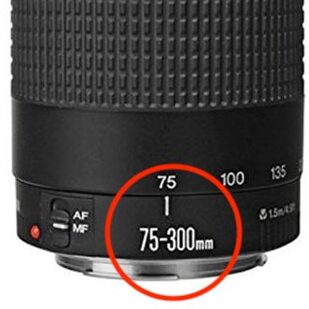
Zoom represents the ratio between focal lengths on a variable lens. Normally, a photographer may use the word “zoom” interchangeably with “focal length”. A focal length is a fixed number often displayed in millimeters on a lens. Zoom may also refer to a specific type of lens, a zoom lens. This lens is able to move between a select range of focal points, as opposed to a fixed lens, which is not able to change it’s focal point.
What’s the difference between Zoom and Fixed lens?
Generally, there are two types of lens: zoom lens and fixed lens. The names of these lenses refer to how many focal lengths you have access to when using a lens. A fixed lens (or prime lens) only has one focal length but is usually smaller, lighter, more compact, and usually has access to a much larger aperture (for example, f1.4 or f1.8). The larger apertures allow more light in and, therefore, is better in low light situations. You can tell also tell a lens is a fixed lens because it only has one focal length.
Zoom lenses are those that provide a range between specific focal lengths, which makes them more versatile and efficient since you don’t have to switch lenses to access different focal lengths like with a fixed lens. Zoom lenses are generally larger, heavier, less compact, and more expensive. Less expensive zoom lenses have variable apertures, which means less light gets in with larger focal lengths because the aperture changes size when moving through the focal lengths on the lens. This means the shutter or ISO will need to be adjusted to compensate when moving from a short focal length to a larger one.
More top of the line zoom lenses have constant apertures, meaning the aperture in the lens doesn’t change when you move through the different focal lengths. You can tell if a zoom lens has a variable aperture because it will mark a range of f-stops on the lens (for example, f/2.8 – f.5.6).
Related Article: Fixed vs Variable Aperture Lenses: Pros and Cons of Each
What Focal Length is the iPhone?
Different generations of iPhones have different focal lengths, some newer iPhones have multiple focal lengths, and so do the different cameras on each phone. The focal lengths for several generations are listed below and can be found under the specifications of each phone.
- iPhone 6 – The focal length of the iPhone 6 is 4.15mm, which is the equivalent of a typical 30mm lens on a 35mm camera
 .
.
- iPhone 7 – The focal length of the iPhone 7 wide-angle camera is equivalent to a 28mm lens on a 35mm standard camera and the telephoto added on the iPhone 7 plus is equivalent to a 56mm lens.
- iPhone 8 – The focal length of the main camera on the iPhone 8 is 3.99mm, which is equivalent to a 35m standard 28mm lens.
- iPhone X – The focal length of the main camera on the iPhone X is equivalent to a 26mm lens on a standard 35mm camera. It also has a zoom lens which is equivalent to a 56mm lens on a 35mm camera.
- iPhone 11 (and iPhone 11 Pro) – The focal length of the main camera on the iPhone 11 and 11 Pro is equivalent to a 26mm lens on a standard 35mm camera. It also has 2 other lenses which are a zoom lens that is equivalent to a 52mm lens on a 35mm camera and a ultra-wide angle lens equivalent to a 13mm lens on a 35mm camera.
- iPhone SE – The focal length of the main camera on the iPhone SE is equivalent to a 28mm lens on a standard 35mm camera.
- iPhone XR – The focal length of the main camera on the iPhone XR is equivalent to a 28mm lens on a standard 35mm camera.
- iPhone 12 (and iPhone 12 Pro) – The focal length of the main camera on the iPhone 12 and 12 Pro is equivalent to a 26mm lens on a standard 35mm camera. It also has 2 other lenses which are a zoom lens that is equivalent to a 52mm lens on a 35mm camera and an ultra-wide angle lens equivalent to a 13mm lens on a 35mm camera.
- iPhone 12 Max – The focal length of the main camera on the iPhone 12 Max is equivalent to a 26mm lens on a standard 35mm camera. It also has 2 other lenses which are a zoom lens that is equivalent to a 65mm lens on a 35mm camera and an ultra-wide angle lens equivalent to a 13mm lens on a 35mm camera.

